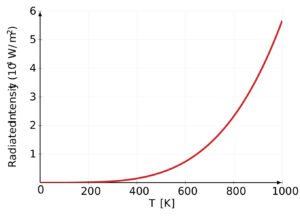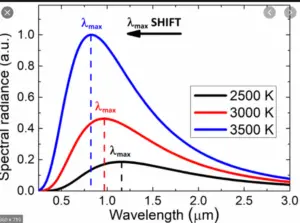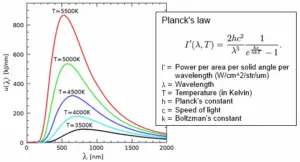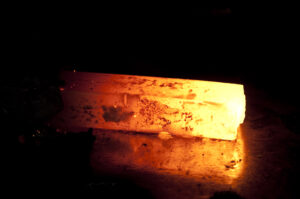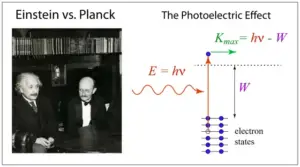The discovery of the proton was a monumental moment in the history of science. It revolutionized our understanding of the structure of matter and paved the way for advancements in modern physics and chemistry. This tiny, yet powerful particle has captivated the minds of scientists for over a century, as they have unraveled its secrets and explored its properties.
Join me on a journey through time and space, as we explore the remarkable story of how the proton was discovered, and the impact it has had on our world. From the early experiments of cathode rays and atomic spectra to the groundbreaking work of Ernest Rutherford, we’ll delve into the fascinating tale of how the proton came to be one of the most fundamental building blocks of the universe.
What is a proton?
A proton is a subatomic particle that is found in the nucleus of an atom. It has a positive electric charge, and its presence is what makes an atom positively charged overall. The number of protons in an atom’s nucleus is what determines the element to which it belongs.

For example, an atom with one proton is hydrogen, while an atom with six protons is carbon. Protons are one of the three basic particles that make up an atom, along with neutrons and electrons. They were first identified by Ernest Rutherford in 1917 through his experiments on atomic structure, and since then, their properties and behavior have been extensively studied in fields such as particle physics, chemistry, and nuclear science.
Properties of proton
Protons are subatomic particles that have several unique properties, including:
- Positive electric charge: Protons carry a positive electric charge, with a magnitude of 1.602 x 10^-19 coulombs. This charge is equal in magnitude but opposite in sign to the negative charge carried by electrons.
- Mass: Protons have a mass of approximately 1.007276 atomic mass units (amu). This is roughly 1,836 times the mass of an electron, making protons significantly heavier than electrons.
- Location: Protons are found in the nucleus of an atom, along with neutrons. The number of protons in the nucleus determines the atomic number of the element and its chemical properties.
- Stability: Protons are considered to be stable particles, meaning they do not decay over time. However, under certain conditions, protons can be converted into other particles through processes such as beta decay.
- Interaction: Protons interact with other particles through electromagnetic force. This force is responsible for holding the positively charged protons together in the nucleus despite their mutual repulsion.
- Spin: Protons have a property called spin, which is a type of intrinsic angular momentum. This spin gives protons a magnetic moment, which allows them to interact with magnetic fields.
Overall, the properties of protons play a crucial role in determining the behavior and properties of atoms and molecules. They are essential building blocks of matter and have a wide range of applications in fields such as nuclear energy, medical imaging, and particle physics research.
Read Also:
- Charge of electron, class 11: chemistry NCERT
- Charge-to-mass ratio of electron, chemistry class 11 NCERT
- Cathode Tube Ray Experiment class 11: working, procedure, observation, and conclusion
- Discovery of Electron class 11: chemistry, NCERT
Why is proton important?
The proton is a critically important subatomic particle because it is one of the fundamental building blocks of matter. Here are some of the reasons why the proton is important:
- Atomic Nucleus: The proton is the positively charged particle that makes up the nucleus of an atom, along with the neutral neutron. The number of protons in an atom’s nucleus determines the element to which it belongs, and it determines the atomic number of that element. The arrangement of protons in an atom’s nucleus also determines its chemical and physical properties, such as its reactivity and boiling point.
- Chemical Bonding: Protons play a crucial role in chemical bonding. For example, in the process of ionization, the loss or gain of one or more protons can turn an atom into an ion with a positive or negative charge, respectively. This charge can then attract other oppositely charged ions or molecules, leading to the formation of chemical bonds.
- Nuclear Energy: Protons are also important in the field of nuclear energy. The process of nuclear fusion, in which atomic nuclei combine to form heavier nuclei, relies on the presence of protons in the nuclei of atoms. Additionally, the process of nuclear fission, in which the nucleus of an atom is split into smaller pieces, also involves protons.
- Medical Applications: Protons are used in medical applications, such as proton therapy for cancer treatment. In proton therapy, a high-energy proton beam is targeted at a tumor, which delivers the dose of radiation directly to the tumor, minimizing damage to surrounding healthy tissue.
History of the discovery of proton
The discovery of the proton can be traced back to the late 19th and early 20th centuries, as scientists began to unravel the mysteries of atomic structure. The following are some of the key milestones in the history of the discovery of the proton:
- Discovery of cathode rays: In 1879, Sir William Crookes discovered cathode rays, which are streams of electrons emitted from a negatively charged electrode in a vacuum tube. This discovery paved the way for further investigation into the nature of subatomic particles.
- Discovery of the electron: In 1897, J.J. Thomson conducted experiments with cathode rays and discovered the electron, a negatively charged subatomic particle. This was the first subatomic particle to be identified.
- Discovery of atomic spectra: In the early 1900s, scientists began studying the light emitted by atoms when they were heated or excited. They found that each element had a unique spectral pattern, which suggested that atoms were made up of distinct components.
- Rutherford’s gold foil experiment: In 1911, Ernest Rutherford conducted an experiment in which he fired alpha particles (which are positively charged) at a thin sheet of gold foil. He found that some of the alpha particles were deflected at large angles, which led him to propose that atoms had a dense, positively charged nucleus.
- Discovery of the proton: In 1917, Rutherford and his colleagues, Hans Geiger and Ernest Marsden, conducted experiments in which they bombarded nitrogen gas with alpha particles. They found that the resulting particles included a new type of subatomic particle that had a positive charge and a mass similar to that of a hydrogen atom. This particle was named the proton, and its discovery marked a major breakthrough in our understanding of atomic structure.
How was the proton discovered?
The discovery of the proton can be attributed to the work of Ernest Rutherford and his colleagues Hans Geiger and Ernest Marsden, who conducted a series of experiments at the University of Manchester in 1917.
Rutherford had previously proposed that atoms had a dense, positively charged nucleus based on his famous gold foil experiment. In this experiment, Rutherford and his team fired alpha particles (positively charged particles) at a thin sheet of gold foil and observed their trajectories. They found that some of the alpha particles were deflected at large angles, which suggested that the positive charge of the atom was concentrated in a small, dense nucleus at the center of the atom.
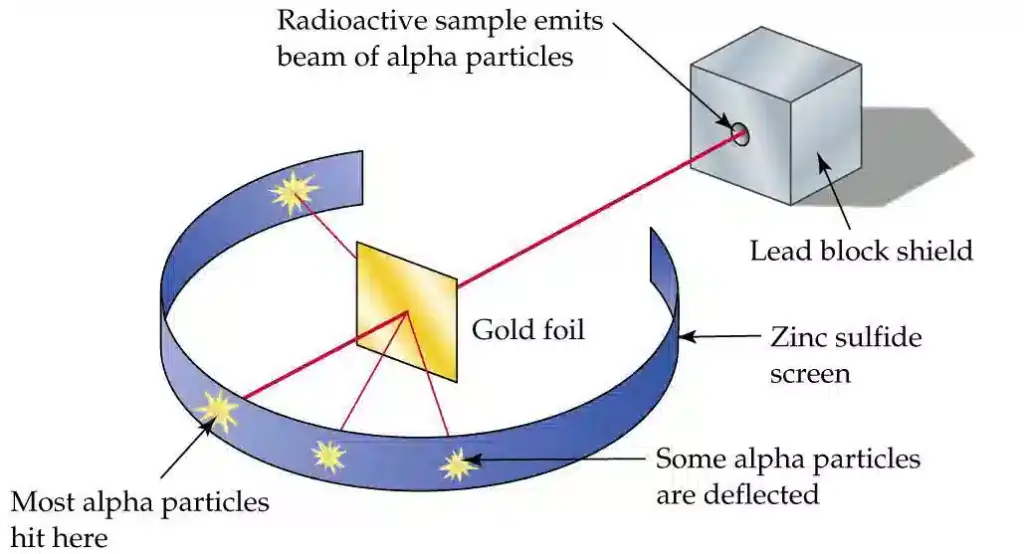
In their experiments in 1917, Rutherford, Geiger, and Marsden aimed alpha particles at a thin sheet of nitrogen gas and observed the resulting particles using a detector. They found that in addition to the expected alpha particles and electrons, there were also particles that had a positive charge and a mass similar to that of a hydrogen atom.
Rutherford and his team realized that they had discovered a new type of subatomic particle, which they named the proton. This discovery was a major breakthrough in the field of atomic structure, as it helped to confirm Rutherford’s earlier hypothesis that atoms had a dense, positively charged nucleus.
In subsequent years, scientists conducted further experiments on the properties and behavior of protons, including their interactions with other particles and their role in determining the chemical properties of elements. This work has helped to shape our understanding of the fundamental nature of matter and has paved the way for advancements in fields such as nuclear physics, chemistry, and medicine.
Read Also:
- Percentage composition chemistry class 11: formula, definition, examples, NCERT
- Mole concept class 11 | definition, formula & solved examples, NCERT
- Uncertainty in measurement chemistry, class 11 NCERT
- Empirical formula & molecular formula: chemistry class 11
E. Goldstein’s discovery of proton
While the discovery of the proton is often attributed to Ernest Rutherford and his colleagues, it is important to note that other scientists also made important contributions to our understanding of atomic structure. One such scientist was Eugen Goldstein, a German physicist who conducted pioneering work on cathode rays and their properties.
In the late 1800s, Goldstein was studying the properties of cathode rays, which are streams of electrons emitted from a negatively charged electrode in a vacuum tube. He observed that when the cathode rays passed through a perforated anode (a positively charged electrode), they created a beam of positively charged particles that moved in the opposite direction of the cathode rays.

Goldstein called these particles “canal rays,” and he found that they had different properties depending on the type of gas in the vacuum tube. For example, he observed that when he used a tube filled with hydrogen gas, the canal rays had a positive charge and a mass that was smaller than that of an atom. He hypothesized that these particles were a new type of subatomic particle, which he called “protons.”
While Goldstein’s work was groundbreaking, it did not receive the same level of attention or recognition as Rutherford’s discovery of the proton several years later. However, Goldstein’s contributions were significant in laying the groundwork for our understanding of the atomic structure and the properties of subatomic particles.
Did Goldstein discover the proton?
No, Goldstein did not discover the proton. The discovery of the proton is generally attributed to Ernest Rutherford, who conducted a series of experiments in the early 20th century to study the structure of atoms. In 1917, Rutherford fired alpha particles at a thin sheet of gold foil and observed that some of the particles were deflected at large angles, indicating the presence of a positively charged nucleus at the center of the atom.
However, Goldstein did contribute to the study of the atom by discovering the canal rays, which are positively charged ions that move through a gas-filled tube when a voltage is applied to it. Goldstein observed that the canal rays were not all the same, and proposed that they were made up of different types of positively charged particles, which he called protons. This was in 1886, more than 30 years before Rutherford’s discovery of the atomic nucleus.
Although Goldstein identified the existence of positively charged particles, he did not fully understand their significance in the structure of the atom, and it was Rutherford’s work that led to the discovery of the proton as a fundamental constituent of the atomic nucleus.
Watch this video for more reference:
Frequently Asked Questions – FAQs
What is a proton?
A proton is a subatomic particle that is found in the nucleus of an atom. It has a positive electric charge, and its presence is what makes an atom positively charged overall.
What discovered the proton?
The discovery of the proton can be attributed to the work of Ernest Rutherford and his colleagues Hans Geiger and Ernest Marsden, who conducted a series of experiments at the University of Manchester in 1917.
Did Goldstein discover the proton?
No, Goldstein did not discover the proton. The discovery of the proton is generally attributed to Ernest Rutherford, who conducted a series of experiments in the early 20th century to study the structure of atoms.
Who named the proton?
The term “proton” was first proposed by the scientist Ernest Rutherford, who is also credited with the discovery of the proton. In 1920, Rutherford used the term “proton” to describe the positively charged particle that he had observed at the center of the atom during his gold foil experiment in 1917.
The term “proton” is derived from the Greek word “protos,” which means “first.” Rutherford chose this name because the proton is the first and most fundamental of the three subatomic particles found in the nucleus of an atom (the other two being the neutron and the electron).
Rutherford’s use of the term “proton” was quickly adopted by the scientific community, and it is now widely used to describe the positively charged particle in the nucleus of an atom.
Why is proton important?
The proton is important because it is a fundamental subatomic particle that plays a crucial role in the structure and behavior of atoms. It carries a positive electric charge and determines the atomic number of an element, which in turn determines its chemical properties and behavior. The presence or absence of protons in the nucleus also affects the stability and radioactivity of atoms.
What is the charge and mass of a proton?
The charge of a proton is +1 elementary charge, which is approximately $1.602 \times 10^{-19}$ coulombs. The mass of a proton is approximately $1.673 \times 10^{-27}$ kilograms or 1 atomic mass unit (amu).
Stay tuned with Laws Of Nature for more useful and interesting content.



